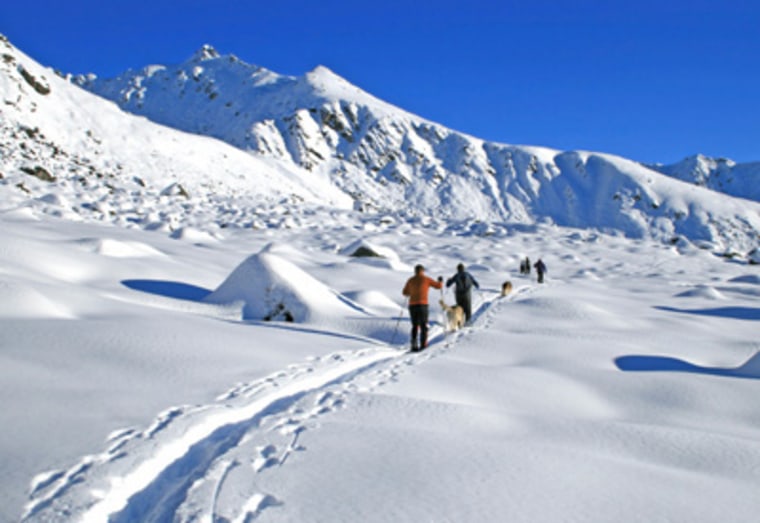Of all the world's high and treacherous mountain peaks, only 14 summits reach above 8,000 meters in elevation. These heralded "Eight-Thousanders" include Everest, K2, Makalu, Annapurna and ten additional stratosphere-scraping summits.
Ed Viesturs, a professional mountain guide from Seattle, has stood atop each one. "It took 18 years and 29 individual expeditions," he said.
Modern-day mountain climbers like Viesturs know earth's steep topography better than anyone in history. Indeed, climbers today — both professional and recreational — stand at a unique juncture in time where jet planes, guide companies and government cooperation in the remotest corners allow the few and willing to see the heights from almost any exotic mountain peak on the planet.
But how do you choose which alpine destination to explore?
Kevin Thaw, a writer, speaker and climber from Uppermill, England, favors Argentine Patagonia, an otherworldly mountain range near the tip of South America. Patagonia's immense granite spires, some stretching 13,000 feet into the sky with mile-high sheer faces, are among the world's most difficult and stunning climbs.
"The peaks above the frontier town of El Chalten in Patagonia form the most striking skyline on our planet," said Thaw.
In an effort to narrow the mountainous list, we polled Thaw, Viesturs and six additional jet-setting climbers to pick their top peaks. The choices — ranging from Washington's Cascades to the Karakoram Range of Pakistan — pose options for beginner and experienced climbers.
Take British Colombia's Selkirk Mountain Range, as an example. This Canadian chain of peaks, chosen by climbing guide Abby Watkins, has knife-edge quartzite ridgelines stretching 2,000 feet long as well as many moderate mountain climbs.
"The Selkirks may not be the highest mountains in the world, but they are beautiful, wild and remote," Watkins said.
Ed Viesturs' pick — the Cascades of Washington State — may come as a surprise. Viesturs, known as a fixture of the Himalaya scene who has summitted Mount Everest six times, chose his home state mountains for several reasons. "The variety of climbing in the Cascades — from high-altitude glaciated volcanoes to technical alpine rock — makes it a unique range."
Another plus Viesturs notes is the Cascades' accessibility. Mount Rainier National Park, for example, is less than 90 miles from Seattle. Weekend warriors are known to dash up the mountain's slopes for fun on a Saturday morning, climbing and descending in a day, back in time for dinner on the Puget Sound.
But the Cascades have wild corners, too. Viesturs said some parts of the mountain range are extremely inaccessible, allowing dedicated climbers to escape the crowds for epic, solitary adventures, all over the course of a weekend getaway. "The range has all sorts of climbing, from volcanoes to granite ridges on peaks approaching 10,000 feet."
Jack Tackle, a veteran climber with Exum Mountain Guides in Moose, Wyo., chose the Alaska Range, a 400-mile-long chain that starts in south-central Alaska. Its most famous peak — 20,320-foot Mount McKinley — is the highest mountain on the continent.
Colorado's Front Range of the Rocky Mountains, picked by Vera Schulte-Pelkum, a geophysicist and climber from Nederland, Colo., is one of the most visited mountain ranges in the country. Schulte-Pelkum appreciates the rock and ice climbing as well as the range's natural history. "The ancient granites and gneisses were formed way back in Earth's history when single cell organisms were busy trying to invent sex," she said.
